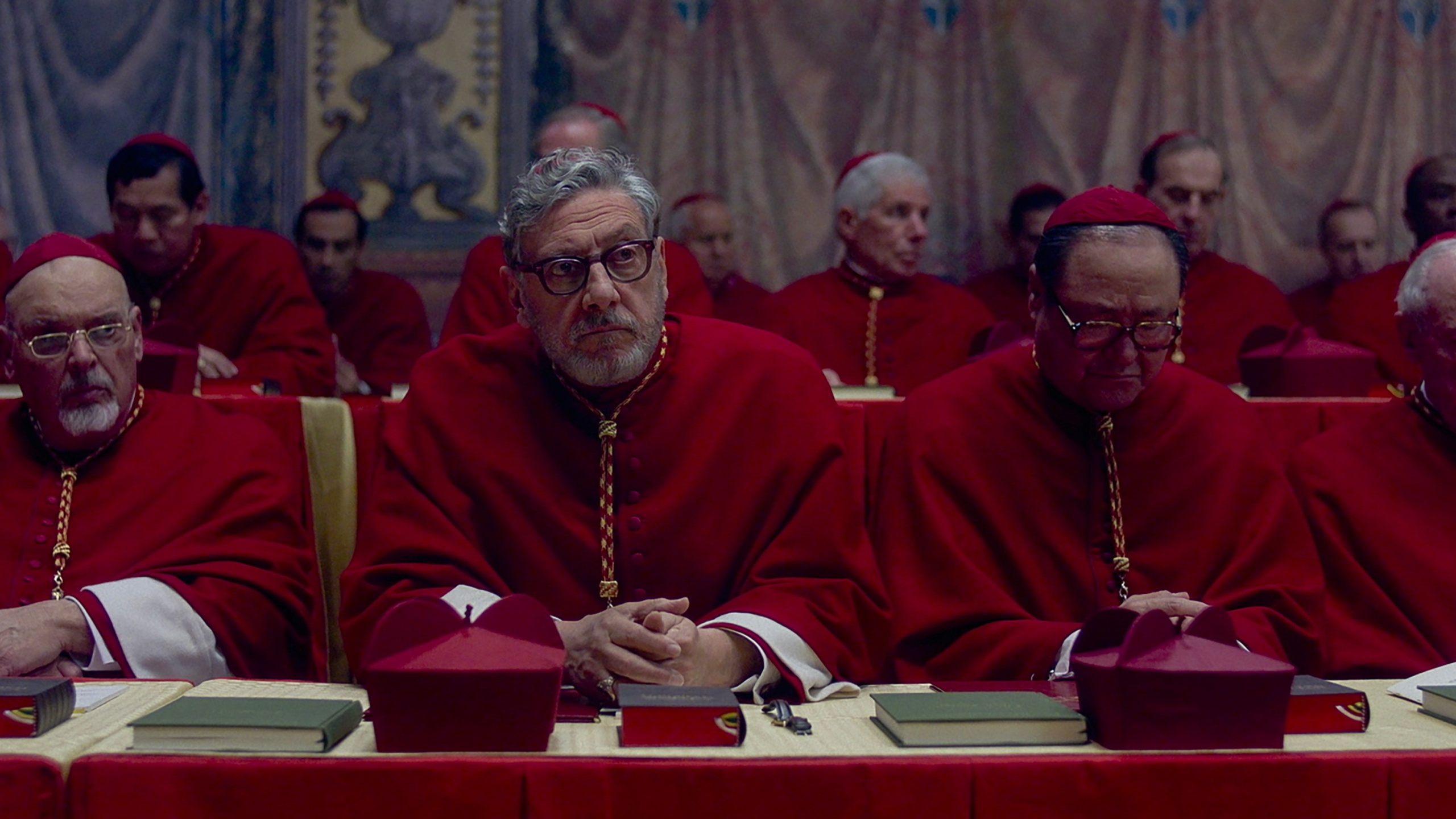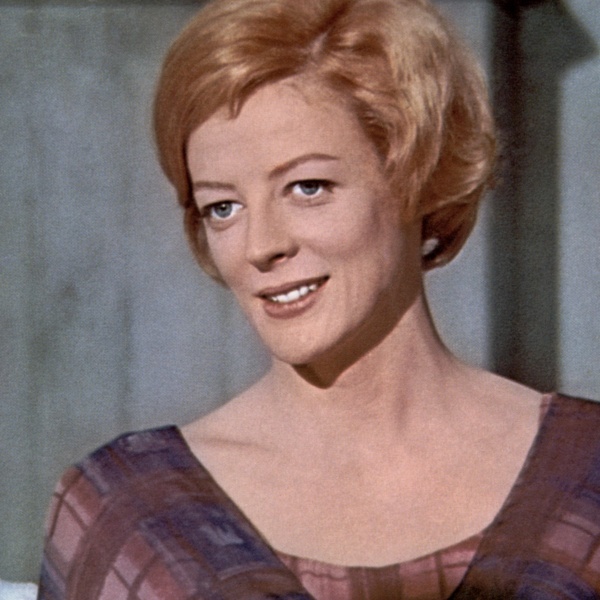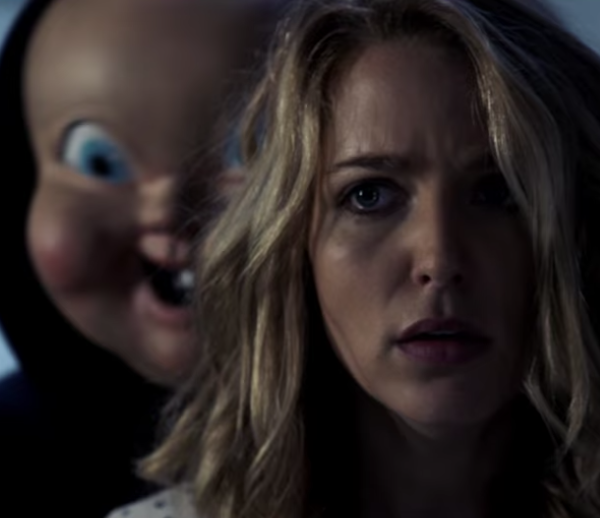[Editor’s note: This article contains spoilers for “Conclave.”]
Tucked in a warehouse in the Cinecittá complex in Rome is something you’d otherwise need to pay 20€ to see in person: The largest film studio in Europe has a collection of painted flats that, when brought together, create a replica of the Sistine Chapel. For “Conclave” production designer Suzie Davies, however, replicating Vatican environments was never the end goal. It was only the beginning.
For one thing, Davies wanted to tweak the layout of the chapel (and the painted flattage she was able to swipe from that warehouse) so that the film’s Sistine Chapel would feel more political. That meant adjusting the seating for the College of Cardinals so they faced each other, like some twisted, gilt session of Congress. “We built up to 10 meters, and then the other 10 meters is a set extension. But our painters painted a good chunk of it, and they’re extraordinary,” Davies said. “We slightly altered what it really is and just built it all again.”
Another total build was the Casa Santa Marta, where the Cardinals are housed for the titular conclave to elect a new Pope. Davies wanted it to feel anonymously imposing and oppressive, almost like an asylum, despite the trappings of grandeur. That meant using every inch of the film stage to create very specific dimensions.
“I wanted to suck all the air out of [the Casa Santa Marta] so that you can just about hear the fluorescent lights humming and the air conditioning ticking over. And there was no natural light; there’s nothing living there. I built the longest corridor I could,” Davies said. “Everything was a bit lower because in the rest of the Vatican, it’s all open and there are these huge, great 20-meter-high ceilings. So the Casa comes into our wide-frame format in a way that just feels so beautifully observed. It has this, ‘Are you being watched? Are you watching?’ sort of feel.”

The court intrigue is aided and abetted by the rich materials of the Casa Santa Marta, from the marble floors and walls to the posh coffee machines. But all of that was manufactured, too. “All that marble on the floor is hand-painted. It’s just sheets of MDF and ply painted and glazed and painted and glazed to get that marble effect, and it’s the same on the walls,” Davies said. “It’s all about the collaboration of all the different, amazing craftsmen and people in the department doing their bits.”
From the painters and the graphics team who figured out the optimal patterns to keep the shine and smoothness of the marble throughout filming to the set decorators who found just the right props to read as a bulk contract buy from the Vatican, every inch of the Casa Santa Marta was tested to make sure it would be an inherently stressful space. “With all that flattage, and moving it around, it’s a bit like an Escher painting to create different worlds,” Davies said.
Davies is no stranger to creating posh prisons after designing the crass and conceited millennial excess in “Saltburn.” But she told IndieWire that the key to bringing tension to the sets of “Conclave” was restraint. “We wanted to not overdress it,” Davies said. “I find that one of the jobs of a designer is knowing when not to do [something] and when to let the locations work hard for you. As much as you think, ‘Well, I need to do everything,’ sometimes you don’t.”

The changes that Davies makes to the church environments were done with emotional resonance in mind, none more so than her take on the Room of Tears, where Cardinal Lawrence (Ralph Fiennes) has one final conversation and confrontation with the newly elected Pope Innocent. It’s a relatively small room that sits underneath the Sistine Chapel, and not many people get to visit the real place. But images are available that show it to be whitewashed with a painted ceiling. In Davies’ design for “Conclave,” though, it’s low and red and warm — almost womblike, for reasons that become obvious over the course of the scene.
“We had so many options of how we were going to create the Room of Tears, and it was all this bright white. We’d never gone white. And it was just like, ‘No, let’s paint it red because it’s the womb; it’s the heart; it’s the life force.’ So we found one of the most amazing locations in Rome — it’s actually one of the Pope’s old farmhouses that’s a sort of rundown museum now,” Davies said.
The production team did what film crews do. They painted the location up, polished the floors, brought in some gilded dressing, and emphasized the lower ceilings, which gives this Room of Tears an extremely human feeling — in direct contrast to all the other grand or sterile spaces in the film.
“I love that we went red there,” Davies said. “ I think it holds you in that space with the characters.”



